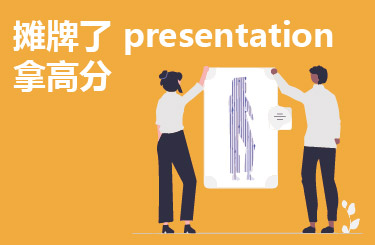只因用了它
总结部分
同样地,在一部分信息叙述完成之后,我们需要总结刚才的叙述,让听众能理清思绪。
●Let’ s summarize briefly what we have looked at.
●Here is a quick recap of the main points of this section.
●I’ d like to recap the main points.
过渡语句
当开始一段新的叙述时,需要给听众-一个信号,以便他们准备好接受一段新的信息,以下过渡语句可参考:
●NowI’ d like to turn to–
●Nowlet’ s look at.–
●1 d now like to move on to the next part–
叙述细节
有时候我们可能会就某个问题深入探讨,这时候下面的例句就可以使用:
●I d like to expand on this aspect/problem/point.
●Let me elaborate further on-.
涉及到图表
大家一定要记住,大部分Presentation都会使用图表。
因为图表远远要比语言更直观,对听众来说也更方便接收其中的信息,所以大家在Presentation中可以适当的借助一些图表来表达信息。
谈到图表时,可以用以下的例句进行过渡:
●Looking at the chart you can see–
●As you can see from the graph,..
●The graph/ chart shows–.
●If you look at this table/bar char/low chart/ line chart/graph, you can see that..
引述或者预告
由于Presentation无法像文字那样回溯或者直接跳跃,有时我们就需要提醒听众之前提到的或者是提前预告听众
接下来还会涉及。
●I mentioned erler.. .
●We’ II come back to this point lter-.
●As Isaid at the beginning,..
●This relates to what I was saying earlier–
●Let me go back to what I said earlier about..
主题介绍
一个好的Presentation首先需要做到的是介绍主题,以便听众对你接下来的叙述有所准备
●The aim of this presentation is-.
●My presentation today is about–
●TodayI’ d like to talk about.-.
●What I am going to talk about today is..
列举要点
由于Presentation是语言形式的输入,要有更强的逻辑性,所以要阐述叙述顺序和要点,有清晰的轮廓。
●My talk will be in two (three, four) parts: Frt,-after
that,-. then,”. fnaly,.
●’ Il begin by looking at.. Then, I’ II move on to.
Towards the endi”Il ….
切入语
对于每一部分的叙述, 我们需要一个切入点,以下这些都是不错的选择
●Let me start with some general information on…
●Ithink everybody has heard about”, but hardly anyone knows a lot about it.
强调重点
当谈到Presentation的重点,我们要进行强调,以便读者知道这部分是重点,提前做好准备。
●It should be emphasized that—
●I would like to draw your attention to this point-.
●This is important because.
解释问题
有时候听众会对我们的某一段叙述不理解, 这种情况下我们要重新叙述,以便听众能够完全理解。
●To put it more simply,”
●What I mean to say is..
●So, whatl’ m saying s..
●To put it in another way-.
叙述细节
有时候我们可能会就某个问题深入探讨,这时候下面的
例句就可以使用: .
●I d like to expand on this aspect/problem/point.
●Let me elaborate further on…




